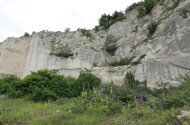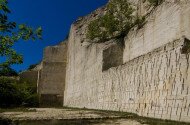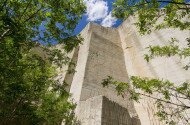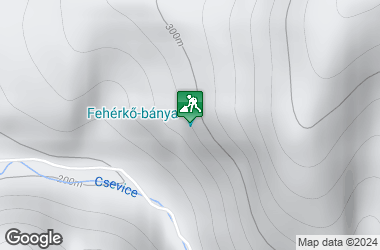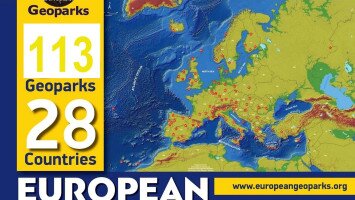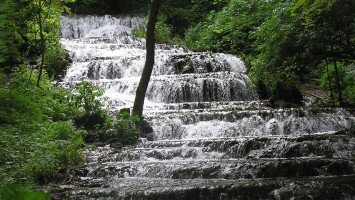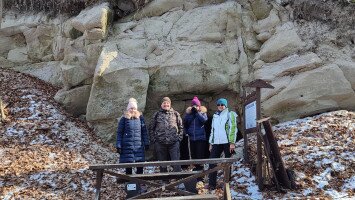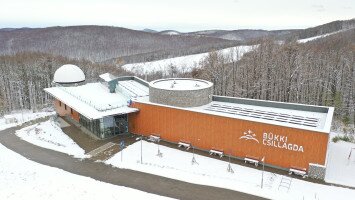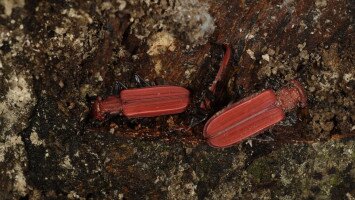
What makes this place interesting? There can be found an important and unique prehistoric memory in Hungary and also in the Carpathian Basin. The dacite tuff in Tar is an outbreak surface, which caused the vulcanism of Matra.
At the middle stage of the Carpathian period the settling rate of basins reduced and filling-up began, making some of them dry lands again. Strengthening structural movements in the Miocene period triggered andesitic volcanism, at first with fierce, undersea explosions that formed Hasznosi Andezit Formacio, previously called "lower andesite". It is a thick assise that consists of mainly piroclastics and hyloclastics, i.e. glassy anemoclastic rocks deriving from the interaction of water and lava. This was followed by another fierce volcanic action resulting in the formation of the Tari Dacittufa Formacio or "middle rhyolitic" tuff capping, a thick layer with ignimbrite patches, deposited chiefly on the mainland. There were quite a few eruptions on the Nograd Geopark territory producing welded tuff 13 to 20 million years ago. Beside the Ipolytarnoc formations, reference must be made to the volcanic formation in Feher-banya in Tar, which reveals sediment layers measuring tens of meters in thickness deriving from this destructive volcanic process. Volcanic debris flows contain a certain amount of gas too. These are either magmatic gases that get to the surface during eruption, or only air trapped in the matter. These gases try to escape as soon as the sediment is deposited. The volcanic sediment emits a lot of fume, like in1912, after the eruption of Katmai, Alaska in the Valley of Ten Thousand Smokes. As they are blown out, the gases carry along minor grains, leaving behind only relatively big pieces to show where they escaped. Welded tuff sediment can fill up valleys or create extensive plateaus. Erosion of the loose sediment will soon start.
